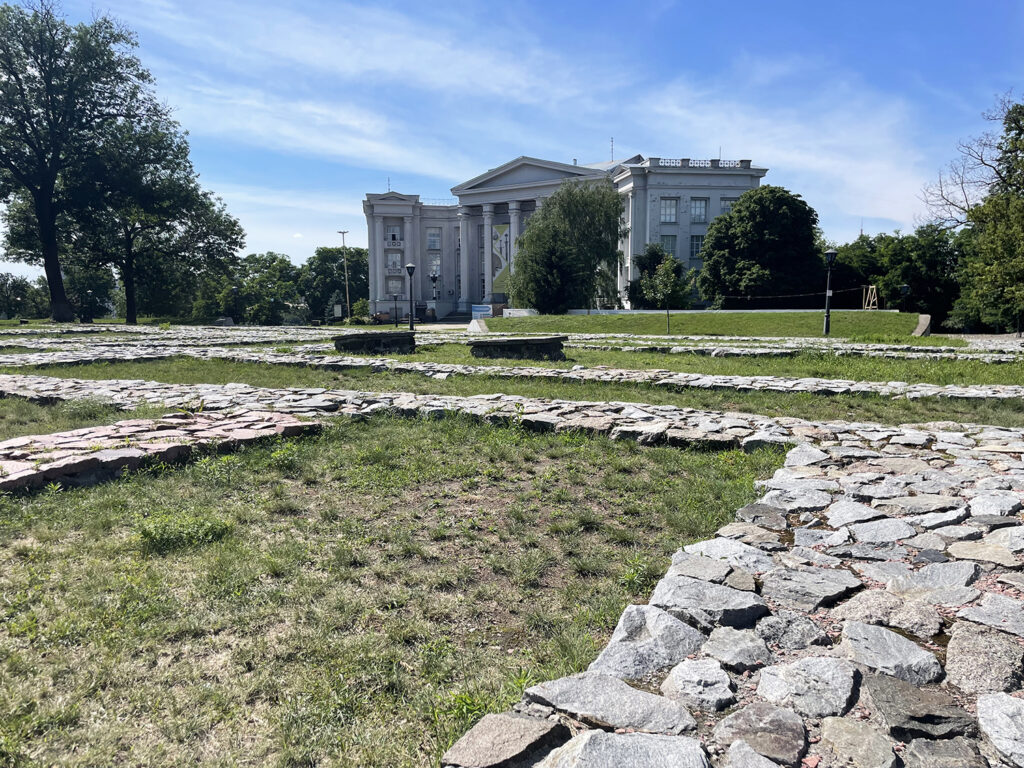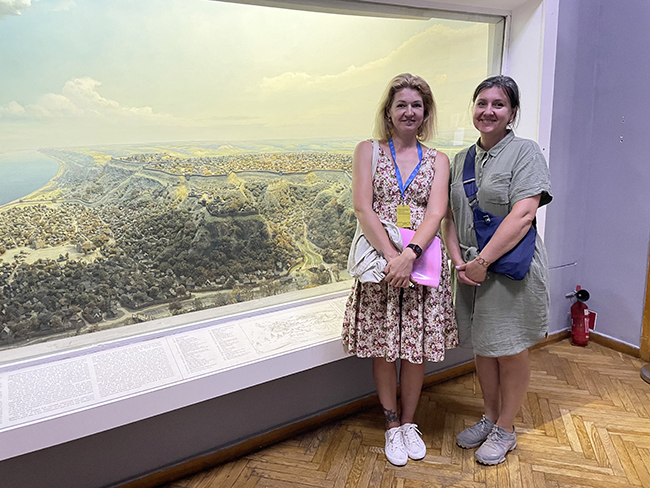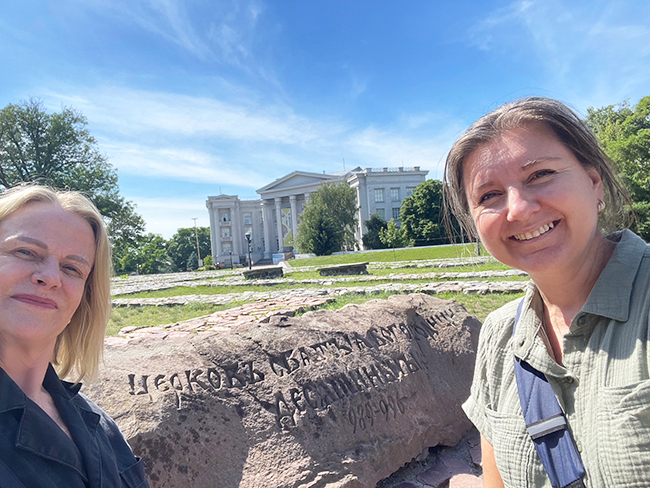Ukraine Diary
Resistance at the Kyiv Museum of History
Of bomb shelters and tea

Editor’s Note: In February, Working Nurse launched The Zhytomyr Hospital Challenge to purchase medical equipment for a hospital in Ukraine. This fundraising campaign was a huge success. In June, Olena Svetlov and I traveled to Ukraine to complete our mission.
I share excerpts from my journal in this Ukraine Diary online series.
Day One in Kyiv. We forced ourselves to stay awake to recover from jet lag and adapt to the new time zone, 10 hours ahead of Pacific Standard Time.
Mid-afternoon, we head to the Kyiv Museum of History, where the spacious front lawn is covered with a grid of stones. We learned that this is the original foundation of the Church of Tithes, constructed in 996 by order of Volodomyr the Great, and is the most ancient part of Kyiv.
The church itself is long gone but the stone foundation remains. It was on these stones that people gathered in February 2022 to dance in a burst of nihilistic merriment as Russian tanks rolled towards the city. The revelers declared that this was the place where Kyiv began, and this was where they would be when it ended.
In the museum, our English-speaking guide showed us exhibits and artifacts, including a cool light-up diorama of ancient Kyiv. Suddenly, the sound of an air raid siren tore through the quiet of the gallery.
“Where is your bomb shelter?” we asked, panicked.
“There,” our guide said, pointing to a staircase.
We rushed down to the basement, where we found a row of chairs against a wall. We were surprised to see that no one else was moving. “They don’t seem to be taking this too seriously,” I whispered to Olena.
We sat there obediently waiting for the all-clear, while museum staff and other patrons continued with their day. At one point, our tour guide came down to ask if we would like some coffee or tea.
I started to wonder: Why do people ignore the warning of a potentially destructive or even fatal attack? Maybe they calculate that their risk is low, given that now most of the fighting is far away in the eastern part of the country. The risk is low, but it’s not zero. Soon after we returned home, there was horrific shelling of a children’s hospital in the center of Kyiv.
I came up a theory: Most of the Russian strikes are at night. It’s a way to intimidate people, to interrupt their sleep, to strike terror.
Now, after two and a half years of war, maybe people ignore the sirens as an act of defiance, of resistance: “You will not intimidate us. You will not control our lives. And if the end really is here, you’ll not find us hiding in a basement. We’ll be dancing on the ancient stones at the Church of Tithes.”


Other Ukraine Diary entries:
Visiting Zhytomyr Hospital
Planes, Trains, and Eight Stuffed Suitcases
Air Sirens and Bomb Shelters
First Aid Kits for Police Officers
Bucha
The Ballet Studio
Animal Rescue
The story from the Feb. 21 issue that launched The Zhytomyr Hospital Challenge.






